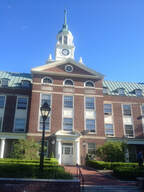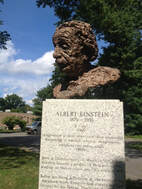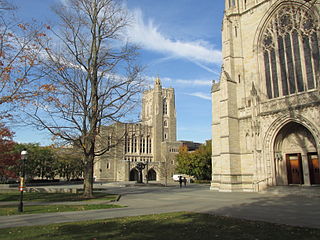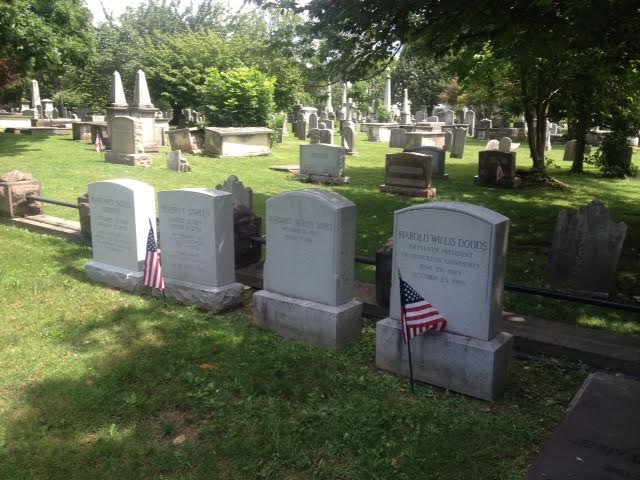-- New Jersey Universities & Colleges - Princeton University
- Public universities & colleges
* Rutgers * Montclair State * Rowan * Kean * NJ Institute of Technology * NJ City
* William Paterson * Stockton * College of NJ * Ramapo * Thomas Edison
- Private universities & colleges
* Princeton * Fairleigh Dickinson * Seton Hall * Drew * Bloomfield * Caldwell * Centenary
* Saint Elizabeth * Felician * Georgian Court * Monmouth * Rider * Saint Peters * Stevens
* Rutgers * Montclair State * Rowan * Kean * NJ Institute of Technology * NJ City
* William Paterson * Stockton * College of NJ * Ramapo * Thomas Edison
- Private universities & colleges
* Princeton * Fairleigh Dickinson * Seton Hall * Drew * Bloomfield * Caldwell * Centenary
* Saint Elizabeth * Felician * Georgian Court * Monmouth * Rider * Saint Peters * Stevens
|
"My experiences at Princeton have made me far more aware of my 'blackness' than ever before. I have found that at Princeton, no matter how liberal and open-minded some of my white professors and classmates try to be toward me, I sometimes feel like a visitor on campus; as if I really don't belong." Michelle Obama * Home
|
-- Princeton University History Timeline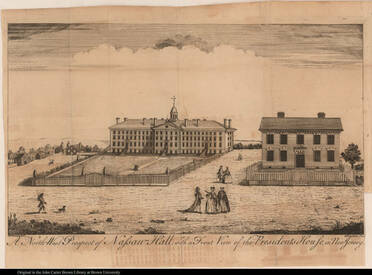
1764 copper engraving--copied from a drawing by William Tennent, a 1758 alumnus—shows Nassau Hall (at left) as it likely looked in 1783, when the Continental Congress n 1776, where it approved the State Constitution. From June to November in 1783, the Continental Congress received General Washington to convey the thanks of the nation for his service and also received news of the signing of the Treaty of Paris officially ending the war.met there beginning in July of that year. To the right is Maclean House, which was the home of the president of the college, then known as the College of New Jersey. Maclean House still stands (see image at right), currently hosting Princeton’s Office of Alumni Affairs. When completed in 1756, Nassau Hall became the largest stone building in America. After the Battle of Princeton, January 3, 1777, the British surrendered to General Washington here, and one of the shots from Alexander Hamilton's battery mutilated the portrait of George II, which hung on the wall. The first Legislature of New Jersey met in Nassau Hall in 1776, where it approved the State Constitution.
- Overview
600-acre campus. Enrollment undergraduate of 5,400, graduate 3,000. Endowment exceeds $25 billion. Ranked #1 in 2021 US News & World Report edition of Best National Universities in US, #20 in Best World Universities. 2019-20 academic year tuition, college fee, room and board costs $69,950, but offset by average aid grant of $56,500 for students admitted to Class of 2023. 5 to 1 student to faculty ratio. UndergraduateS 38% white, 23% Asian, 10% Hispanic and 8% Black. Students live in one of six residential colleges that provide dining services but have option to join one of more than 10 eating clubs for their junior and senior years. 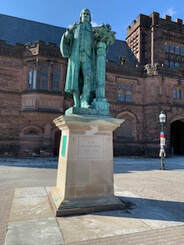 Statue on campus of John Witherspoon, College president from 1768 until death in 1794 Image: NewJerseyAlmanac.com Statue on campus of John Witherspoon, College president from 1768 until death in 1794 Image: NewJerseyAlmanac.com
- History
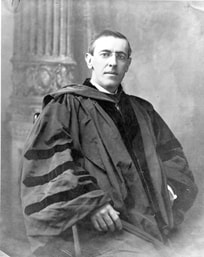 Woodrow Wilson in academic robes. Image: Wikimedia Commons Woodrow Wilson in academic robes. Image: Wikimedia Commons
 Hobey Baker in Princeton football uniform. Image: Wikimedia Commons Hobey Baker in Princeton football uniform. Image: Wikimedia Commons
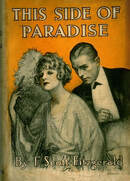
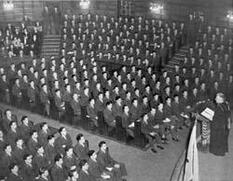 Army training program convened in Richardson Auditorium on January 1, 1944. Image: Princeton University Library Army training program convened in Richardson Auditorium on January 1, 1944. Image: Princeton University Library
* Our History, Princeton University
* Princeton Alumni Weekly * Daily Princetonian * Princeton University During World War II, Mudd Library, Princeton University * "Even Princeton”: Vietnam and a Culture of Student Activism, 1967-1972, 2/24/2016, Mudd Library, Princeton University * 50 Years Ago, Princeton Trustees Voted to Admit Women as Undergraduates, 1/11/2019, Princeton Alumni Weekly * African Americans and Princeton University: A Brief History, 1/7/2019, Princeton University Library
* Princeton Slavery Project * Slaves in the Ivy League: Princeton Discovers Its Racial Past, 11/6/2017, Chronicle of Higher Education * Princeton's Complicated Legacy: Reconsidering Woodrow Wilson and a Slave Named Jimmy Johnson, 8/9/2018, Philly.com * President Eisgruber’s message to community on removal of Woodrow Wilson name from public policy school and Wilson College, 6/27/2020 |
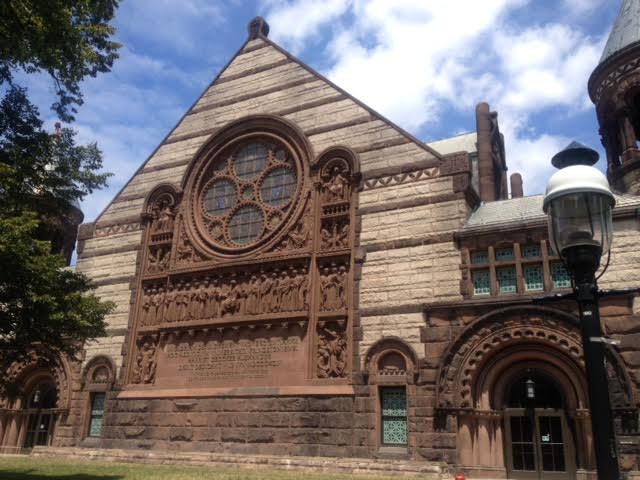
Alexander Hall, which contains 900-seat Richardson Auditorium, wis named in honor of three generations of the Alexander family, who all served as University trustees. Completed in 1894, it previously was the site of annual Commencement ceremonies and other major events, lectures and performances. Image: NewJerseyAlmanac.com
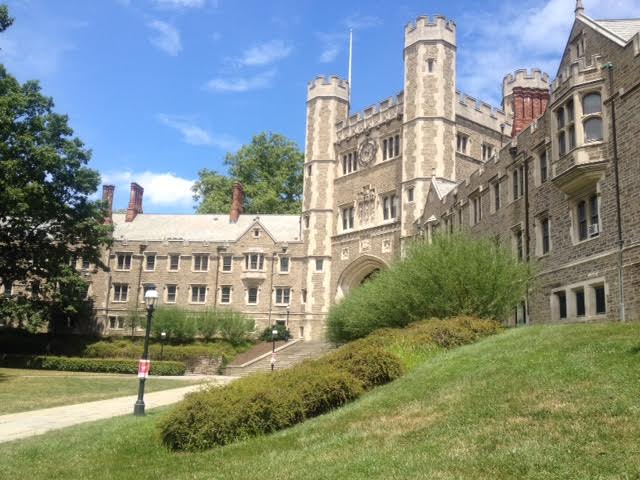
Mathey College, named after alumnus in Class of 1912 and long-time University trustee and patron Dean Mathey, was established in 1982 and is one of six residential colleges at Princeton. It is known for Blair Arch, the largest arch on campus featured prominently in the movie A Beautiful Mind. Image: NewJerseyAlmanac.com
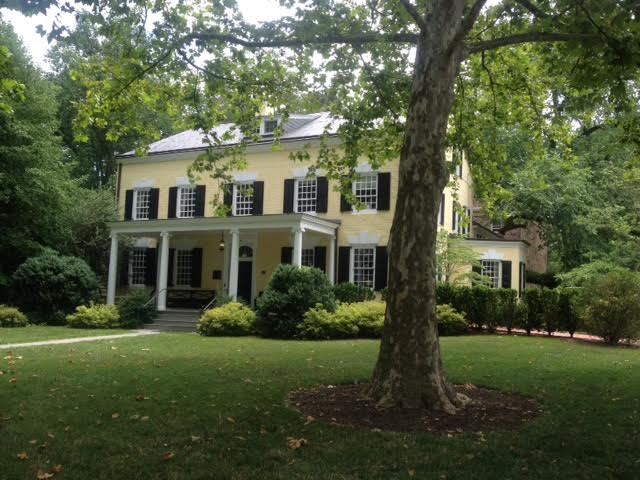
Maclean House, also known as the President's House, was built in 1756 to serve as the home of the President of the College of New Jersey. John Witherspoon, the College president, lived here from 1768 through 1779, during which time he served as a delegate to the Continental Congress and signed the Declaration of Independence. George Washington occupied Maclean House in January 1777, during the Battle of Princeton and in 1783 while Congress met nearby in Nassau Hall. Image: NewJerseyAlmanac.com
|
